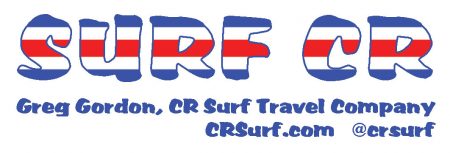5 Tips to Get Ready for Your First Surf Lesson

5 Tips to Get Ready for Your First Surf Lesson – Greg Gordon
 When you are visiting Costa Rica, one of the first things you notice when you head to the beach are all the good surfers. They paddle out so easily and catch almost any wave they choose, riding it effortlessly to the sand. It makes you want to learn and enjoy the feeling of riding a wave successfully. You sign up for a surf lesson and then want to know how to prepare for it. Here are five tips to help you make the experience fun and more rewarding.
When you are visiting Costa Rica, one of the first things you notice when you head to the beach are all the good surfers. They paddle out so easily and catch almost any wave they choose, riding it effortlessly to the sand. It makes you want to learn and enjoy the feeling of riding a wave successfully. You sign up for a surf lesson and then want to know how to prepare for it. Here are five tips to help you make the experience fun and more rewarding.
1 Stretch and do some pushups
Getting your body ready to surf is very important. When you see the pros, they often sit or stand on the beach preparing their body by stretching while watching the waves. I stretch first by spreading my legs wide and leaning towards each foot a few times. If you do yoga, it’s like Side Angle pose. I also do some Up and Down Dog poses for my back, and then sit and do some groin opening stretches and twist my lower back. Then I touch my toes with legs stretched.
The pushups help with the motion of ‘popping up’. Ideally you want to get to your feet in one motion, but many instructors teach you to come up one foot at a time. Then the key to keeping your balance is to stay low. Your stance is similar to a Warrior Two pose. The stronger your triceps and shoulders are, the easier it is to stand up.
2 Dress Appropriately
For both men and women, I recommend wearing a rash guard top. This helps prevent sun burn on your back and prevents your stomach and chest from getting a rash from the wax on the board. I prefer a short sleeve rash guard since it is more flexible and does not restrict arm movement as much. Wear a bathing suit that is comfortable and not too loose so it does not come off if you fall. Bathing suits should also stretch around the thighs for flexibility. If you have long hair, bring a hair tie so it stays out of your face.
3 Wear sunscreen
Be sure to apply sunscreen with an SPF of at least 30 about 10-15 minutes before you get to the beach. That way you are not sweating in the sand while trying to apply it and it has time to soak in. Many surfers prefer sunscreen with zinc oxide since it is more reef friendly and you can see where you applied it your face. Others like a lotion since it does not burn their eyes and stays on even after rubbing your nose or neck. Whichever you choose, try it out before your lesson so you see which works better for you. You want one that does not make your eyes burn. Remember the sun is more powerful when it is cloudy and when it reflects off of the ocean.
4 Hydrate
It is surprising how much you sweat when you paddling for waves and riding them. So it is imperative that you drink a lot of water (I recommend at least 16 ounces) before paddling out. And after surfing be sure to drink more water as you will have lost of lot of fluids from your exercise.
5 Check the surfboard
Many surf schools have quality surfboards to learn on, but a few do not. You want to check that the board does not have cracks in them that could cut you. Look at the leash to see that does not have any knots, or is fraying where it attaches to the board. Check the fins to be sure they will not come out (they do at times and the school may charge you for it). And be sure it has enough wax on the top so you will not slip off. Slide your hand across the top to feel how grippy it is. Also, lift up to see that it is not way too heavy for you to control. If it is an old board, it may have water in it which makes it unstable. If you feel uncomfortable in any way, ask for a different board. You need the right board to help you catch and ride waves more easily.
Post lesson tips – Remember to stretch! This way your arm, shoulder, back, and leg muscles do not tighten up the next day. If you did get sunburn or a rash, remember to hydrate more and apply aloe. Coconut oil also helps with sunburns and rashes.
For tips on how to find the best surf instructor, read this article on my website –crsurf.com/travel-blog/what-makes-the-perfect-surf-instructor/
If you want more travel advice or help planning a trip, visit CRsurf.com.
